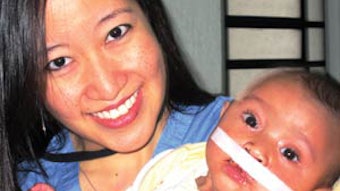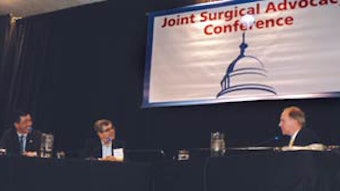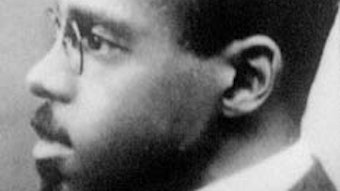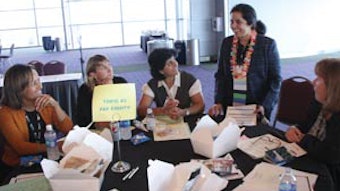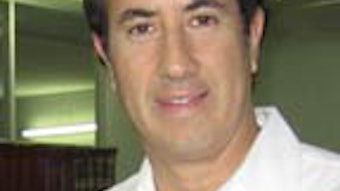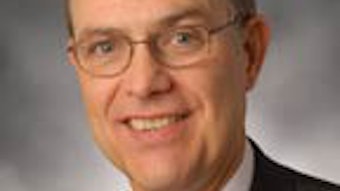With the SRF in Mind: This Meeting Is for You
Collin B. Grabarek The AAO-HNS recognizes resident otolaryngologists are the specialty’s future. Continually seeking to improve patient care, the Academy provides the next generation of otolaryngologists with resources they can use to advance and refine their field. During the 2011 Annual Meeting & OTO EXPO in September in San Francisco, the Foundation and its Section for Residents and Fellows-in-Training (SRF) invite residents to participate in a number of events designed specifically for them. The annual Leadership Development Training Session on Saturday afternoon, September 10, will provide residents with a crash course in AAO-HNSF 101. Here, residents can learn about the organization’s structure, operation, and goals. Attendees will discover opportunities to get involved in the Academy as volunteers and network with leaders in the field. Attending the Leadership Development Training Session is the perfect way for residents to gain a better understanding of the AAO-HNS and all it offers. Moreover, residents are encouraged to attend the SRF-sponsored miniseminar, “Practice Considerations and Contracts for New Employment.” At 10:30 a.m., on Tuesday, September 13, this program will explore common career concerns of both emerging otolaryngologists and those entering new practice opportunities. From interviewing basics to contract negotiation tips, residents will glean knowledge they can use to progress in the world of professional medicine and protect themselves while doing so. The Academy also invites residents to participate in the SRF General Assembly at 2:30 pm, on Monday, September 12. By having a voting member on the Academy’s Board of Governors (BOG) and by interacting with the Academy’s Board of Directors, the SRF ensures that residents’ opinions reach the ears of those who can make things happen in the Academy. At the General Assembly, residents not only receive updates from the Section’s leadership and take part in breakout sessions, but they also get to cast their votes for the SRF Governing Council. The Academy encourages all residents to help elect next year’s SRF Governing Council members, who bring residents’ concerns to the attention of the Board of Governors and the American Board of Otolaryngology (ABOto). Please let your voice be heard. Residents also may take part in the always popular Academic Bowl at 10:30 am, on Sunday, September 11. Audience members can watch—and join in—as teams from four of the nation’s outstanding residency programs compete in a test of clinical knowledge. Loyola University, Tulane University, the University of Mississippi, and the University of Texas Southwestern will be competing. Participants are encouraged to play along, using an anonymous wireless response system. The Academic Bowl is a fun and exciting way to interact with fellow Academy members, and to brush up on important information in preparation for the ABOto’s upcoming Maintenance of Certification (MOC) process. Through the Academic Bowl, you can even earn CME. Far from exhaustive, this brief article does not do the Annual Meeting justice, and it covers only a handful of the many events that residents may find intriguing, enlightening, and useful. Please check future issues of the Bulletin for more about the Annual Meeting, and visit the meeting website at www.entnet.org/annual_meeting. We look forward to seeing you in San Francisco. Please note that all event times are subject to change. For the most up-to-date schedule, visit www.entnet.org/annual_meeting.
Collin B. Grabarek
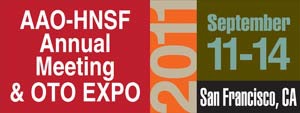
The annual Leadership Development Training Session on Saturday afternoon, September 10, will provide residents with a crash course in AAO-HNSF 101. Here, residents can learn about the organization’s structure, operation, and goals. Attendees will discover opportunities to get involved in the Academy as volunteers and network with leaders in the field. Attending the Leadership Development Training Session is the perfect way for residents to gain a better understanding of the AAO-HNS and all it offers.
Moreover, residents are encouraged to attend the SRF-sponsored miniseminar, “Practice Considerations and Contracts for New Employment.” At 10:30 a.m., on Tuesday, September 13, this program will explore common career concerns of both emerging otolaryngologists and those entering new practice opportunities. From interviewing basics to contract negotiation tips, residents will glean knowledge they can use to progress in the world of professional medicine and protect themselves while doing so.
The Academy also invites residents to participate in the SRF General Assembly at 2:30 pm, on Monday, September 12. By having a voting member on the Academy’s Board of Governors (BOG) and by interacting with the Academy’s Board of Directors, the SRF ensures that residents’ opinions reach the ears of those who can make things happen in the Academy.
At the General Assembly, residents not only receive updates from the Section’s leadership and take part in breakout sessions, but they also get to cast their votes for the SRF Governing Council. The Academy encourages all residents to help elect next year’s SRF Governing Council members, who bring residents’ concerns to the attention of the Board of Governors and the American Board of Otolaryngology (ABOto). Please let your voice be heard.
Residents also may take part in the always popular Academic Bowl at 10:30 am, on Sunday, September 11. Audience members can watch—and join in—as teams from four of the nation’s outstanding residency programs compete in a test of clinical knowledge. Loyola University, Tulane University, the University of Mississippi, and the University of Texas Southwestern will be competing.
Participants are encouraged to play along, using an anonymous wireless response system. The Academic Bowl is a fun and exciting way to interact with fellow Academy members, and to brush up on important information in preparation for the ABOto’s upcoming Maintenance of Certification (MOC) process. Through the Academic Bowl, you can even earn CME.
Far from exhaustive, this brief article does not do the Annual Meeting justice, and it covers only a handful of the many events that residents may find intriguing, enlightening, and useful. Please check future issues of the Bulletin for more about the Annual Meeting, and visit the meeting website at www.entnet.org/annual_meeting. We look forward to seeing you in San Francisco.
Please note that all event times are subject to change. For the most up-to-date schedule, visit www.entnet.org/annual_meeting.
